You’ve probably heard that native prairie plants automatically thrive in Nebraska’s climate, but that’s only half the story. While species like Purple Prairie Clover and Wild Bergamot handle drought conditions exceptionally well, they won’t succeed without proper soil preparation and strategic placement. The real secret lies in understanding Nebraska’s microclimates, which vary dramatically across the state’s 77,000 square miles, creating pockets where certain natives flourish while others struggle unexpectedly.
Contents
- 1 Nebraska’s Soil and Weather Patterns
- 2 Best Prairie Wildflowers for Nebraska
- 3 Nebraska’s Hardy Native Trees
- 4 Nebraska’s Best Native Shrubs
- 5 Selecting the Right Native Plants for Your Garden
- 6 Frequently Asked Questions
- 6.1 When Is the Best Time to Plant Native Prairie Plants in Nebraska?
- 6.2 How Much Do Native Prairie Plants Typically Cost Compared to Non-Natives?
- 6.3 Where Can I Purchase Native Prairie Seeds and Plants in Nebraska?
- 6.4 Do Native Prairie Plants Attract Deer or Other Wildlife to My Property?
- 6.5 How Long Does It Take for Native Prairie Plants to Become Established?
Nebraska’s Soil and Weather Patterns
When you’re selecting prairie plants for your Nebraska landscape, understanding the state’s diverse soil foundation becomes your first critical step. Nebraska’s soil types vary dramatically across regions, from sandy soils in the Sandhills to clayey soils in shale areas. You’ll encounter Mollisols with their thick, dark surfaces rich in organic matter, plus Entisols lacking distinct horizons.
Weather patterns work alongside these soils to create unique growing conditions. The state’s 385 soil series group into 31 associations, each responding differently to precipitation and temperature fluctuations, directly affecting which native plants will thrive in your specific location. Prairie grasses have historically contributed to the formation of these soils by adding organic matter over thousands of years.
Best Prairie Wildflowers for Nebraska
Nebraska’s diverse prairie ecosystem supports numerous native wildflowers, from the state’s golden goldenrod to vibrant coneflowers, blue natives, yellow bloomers, and essential wildlife-supporting species. With over 100 varieties of native wildflowers thriving in Western Nebraska, the region offers exceptional biodiversity for nature enthusiasts and conservation efforts.
Purple Prairie Clover

Purple Prairie Clover (Dalea purpurea) is a stunning native perennial that exemplifies the beauty and resilience of Nebraska’s prairie heritage. This drought-tolerant member of the pea family produces distinctive cone-shaped flower spikes adorned with vibrant magenta-purple blooms from late spring through summer. Growing 1-3 feet tall with delicate compound leaves, it thrives in the well-drained soils and sunny conditions typical of the Great Plains.
Beyond its ornamental value, Purple Prairie Clover serves as an ecological powerhouse in prairie ecosystems. As a legume, it fixes nitrogen in the soil, benefiting surrounding plants while providing high-protein forage for wildlife. The long-blooming flowers attract native bees, butterflies, and other pollinators, making it invaluable for supporting biodiversity in restored prairies and native landscapes. The tiny flowers follow a distinctive upward progression as they bloom, starting at the base of the cylindrical cone and advancing toward the tip throughout the growing season.
- Hardiness: USDA zones 3-8, extremely cold tolerant
- Light: Full sun, tolerates partial sun but prefers maximum sunlight
- Water: Low to moderate; drought-tolerant once established, requires minimal irrigation
- Soil: Well-drained, sandy to clay soils; tolerates poor, dry, and alkaline conditions
- Fertilizer: None required; fixes its own nitrogen as a legume
- Pest/Disease Resistance: Excellent resistance to most pests and diseases
- Growth Rate: Moderate; establishes slowly but forms long-lived colonies
Wild Bergamot

Wild Bergamot is a native prairie wildflower perfectly suited to Nebraska’s climate, reaching 3 feet tall with fragrant pink to lavender blooms from June through August. This member of the mint family spreads naturally via rhizomes and serves as an excellent pollinator plant, attracting bees, butterflies, and hummingbirds while remaining deer resistant.
Historically used by Native American tribes for medicinal purposes, Wild Bergamot’s leaves can be brewed as tea or used as culinary herbs with oregano-like flavors. The plant produces distinctive brown nutlets as fruit after the blooming period concludes. Its established root system provides erosion control benefits, making it valuable for both ecological restoration and ornamental landscaping in prairie settings.
- Hardiness: USDA zones 4-8
- Light: Full sun to partial shade (6+ hours recommended)
- Water: Medium moisture during establishment, drought-tolerant once established
- Soil: Well-drained sand, loam, or clay; pH 6.0-7.5; tolerates acidic to alkaline conditions
- Fertilizer: Not typically required for native plantings
- Pest/Disease Resistance: Generally resistant; may develop powdery mildew without proper air circulation
- Growth Rate: Moderate spreader via rhizomes; requires division every 2-3 years
Black-Eyed Susan
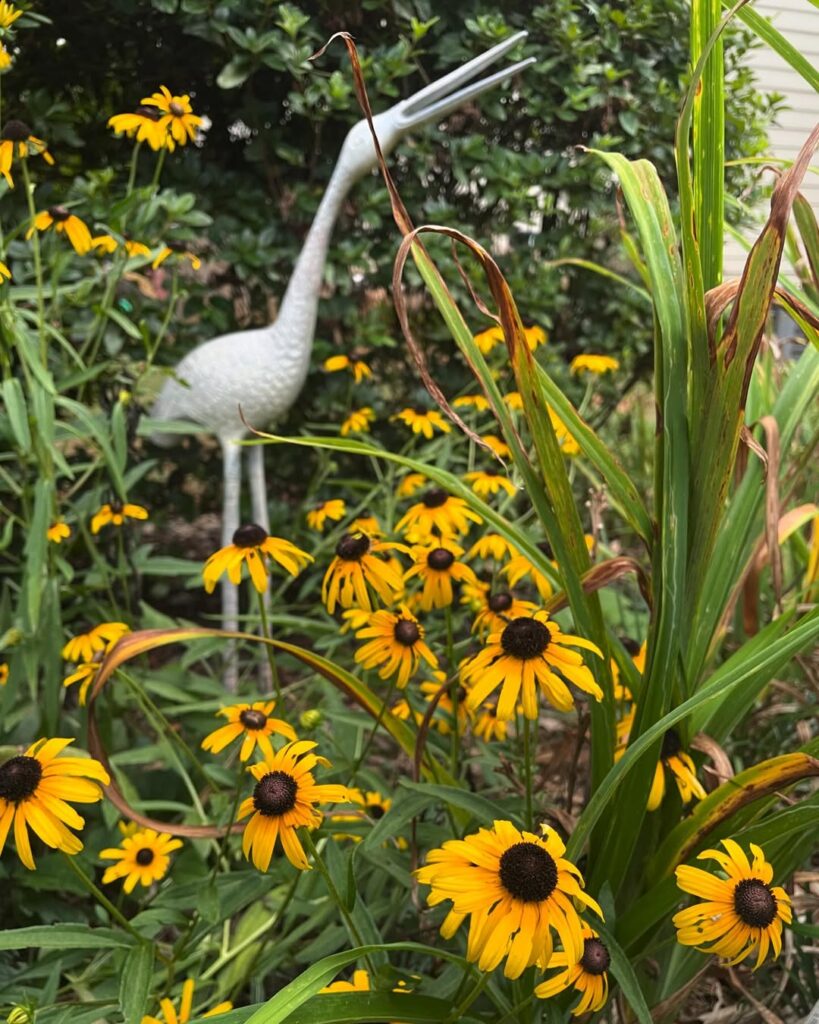
Black-Eyed Susan is a cheerful prairie native that brings vibrant yellow daisy-like flowers to Nebraska landscapes from June through October. Growing up to 3 feet tall with distinctive brown-centered blooms, this hardy wildflower thrives in full sun and demonstrates remarkable drought tolerance once established. Its rough-textured stems and unscented flowers make it an excellent choice for prairie restoration and pollinator gardens.
This adaptable plant functions as an annual, biennial, or short-lived perennial depending on growing conditions. Black-Eyed Susan readily self-seeds to create naturalized displays and matures quickly, making it ideal for new wildflower gardens. The flowers attract bees and beneficial insects while providing seeds for birds, supporting local wildlife throughout the growing season. The plant produces cypsela fruits, often called achenes, which serve as an important food source for songbirds and small wildlife.
- Hardiness: Functions as annual, biennial, or short-lived perennial; native throughout Nebraska
- Light: Full sun preferred, though may bloom longer with some afternoon shade
- Water: Drought tolerant once established; prefers moist to dry conditions
- Soil: Well-drained soils with acidic pH below 6.8; tolerates prairie and woodland edge conditions
- Fertilizer: Minimal requirements; thrives in natural prairie conditions
- Pest/Disease Resistance: Deer tolerant; juglone tolerant; generally pest-free
- Growth Rate: Fast-maturing; excellent for quick establishment in new gardens
Blazing Star
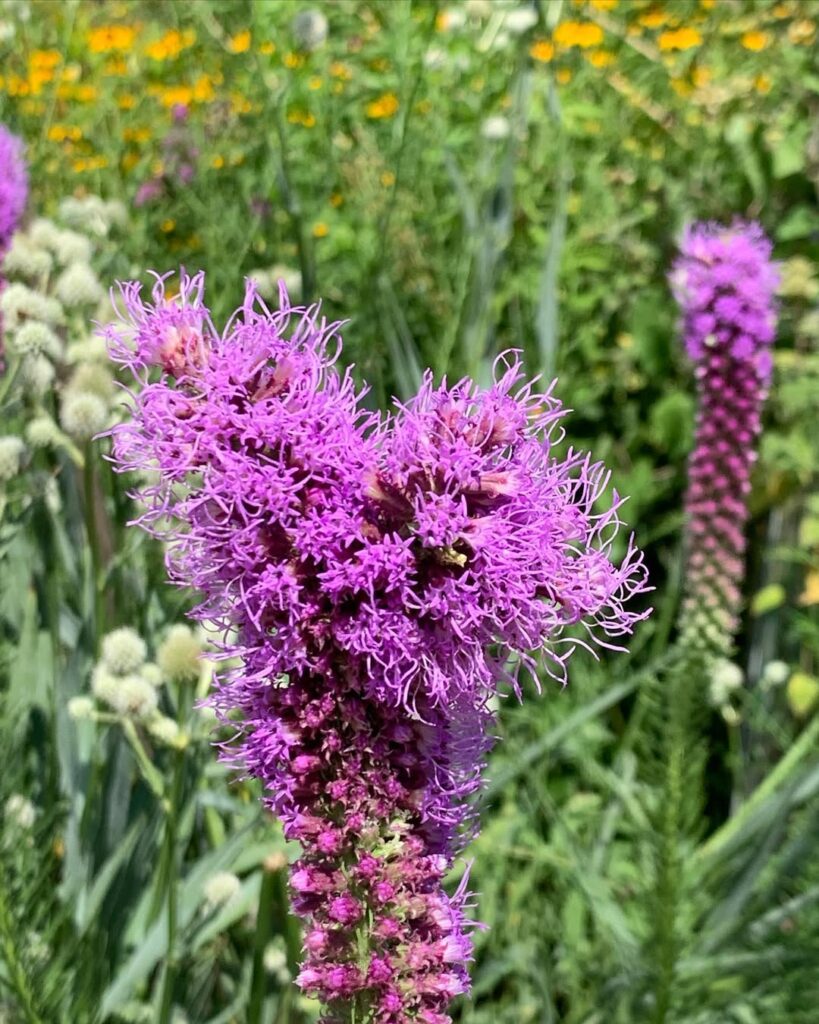
Blazing Star, also known as Gayfeather, stands out as one of Nebraska’s most striking prairie wildflowers. With its distinctive upright spikes of magenta and purple blooms, this native perennial creates dramatic vertical interest in prairie gardens and wildflower meadows. The flowers open uniquely from top to bottom, extending the blooming period from July through September.
These hardy perennials thrive in Nebraska’s challenging climate, tolerating extreme heat and drought while providing exceptional value for pollinators. Multiple species offer gardeners options for different site conditions, from moisture-tolerant Spiked Gayfeather to drought-loving Dotted Blazing Star. Beyond their ornamental appeal, Blazing Stars serve as vital habitat plants, attracting butterflies, bees, and other beneficial insects while providing seeds for birds. Their narrow flowering spikes make them ideal “see-through” plants that don’t obstruct views of other garden elements.
- Hardiness: USDA Zones 3-9, extremely cold hardy
- Light: Full sun preferred, tolerates partial shade
- Water: Low to moderate; drought tolerant once established
- Soil: Well-drained sandy, rocky, or loamy soils; tolerates poor soil quality
- Fertilizer: None required; thrives in poor soils
- Pest/Disease Resistance: Deer resistant, generally pest and disease free
- Growth Rate: Moderate; establishes slowly but long-lived perennial
Wild Indigo
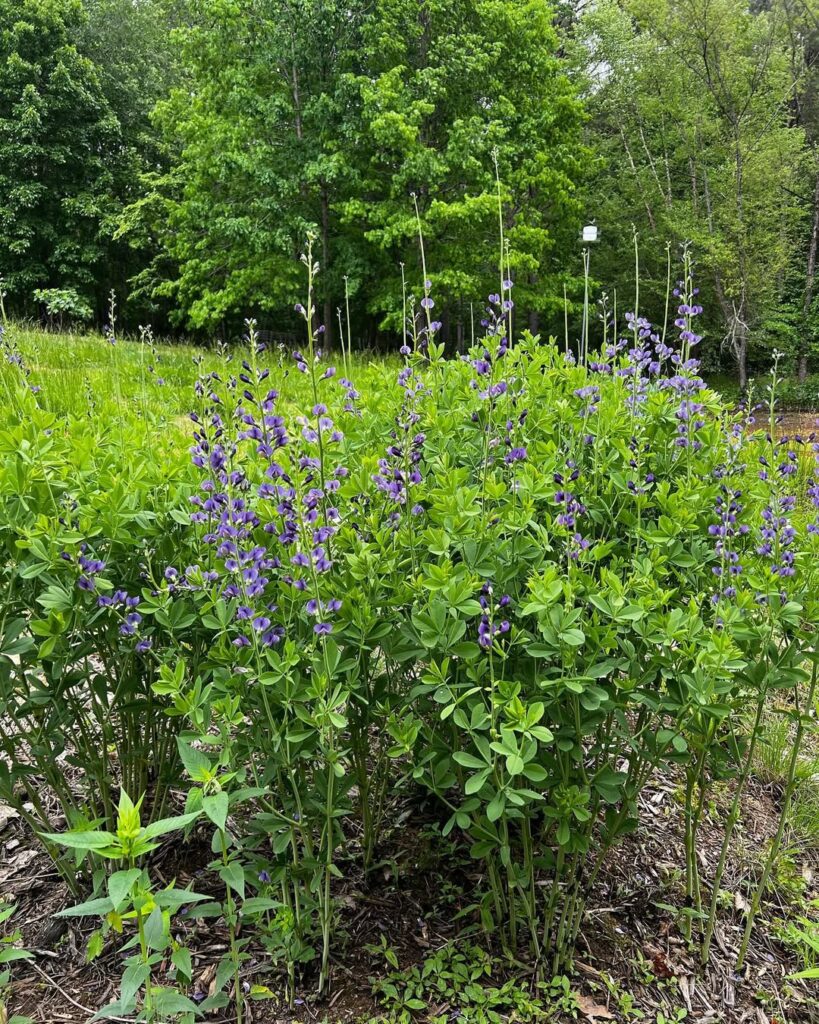
Wild indigo represents several native Nebraska species perfectly adapted to prairie conditions. These deep-rooted perennials showcase stunning flower spikes in blue, purple, or cream-white from April through July, followed by distinctive inflated seed pods that provide autumn interest. As members of the pea family, they naturally fix nitrogen in the soil while supporting pollinators and wildlife.
These low-maintenance natives thrive in Nebraska’s challenging climate, tolerating drought and poor soils once established. Their bushy growth habit ranges from 1-5 feet tall, making them excellent choices for both restoration projects and ornamental gardens. The silvery-gray autumn foliage adds seasonal appeal to prairie landscapes. Wild indigo plants also provide valuable dye material, as their plant juice can substitute for true indigo in traditional dyeing processes.
- Hardiness: USDA zones 3-9, extremely cold tolerant
- Light: Full sun preferred, tolerates partial shade
- Water: Drought tolerant once established, minimal supplemental watering needed
- Soil: Adaptable to sandy, loam, and clay soils; prefers well-drained sites
- Fertilizer: None required due to nitrogen-fixing root nodules
- Pest/Disease Resistance: Excellent resistance to common prairie pests and diseases
- Growth Rate: Slow to moderate establishment, long-lived once mature
Nebraska’s Hardy Native Trees
Nebraska’s diverse native trees offer exceptional climate resilience, with over 30 species providing ecological benefits, practical applications, and natural adaptation to local soil and weather conditions. These trees have evolved to tolerate extreme weather conditions characteristic of the Great Plains environment.
Eastern Cottonwood
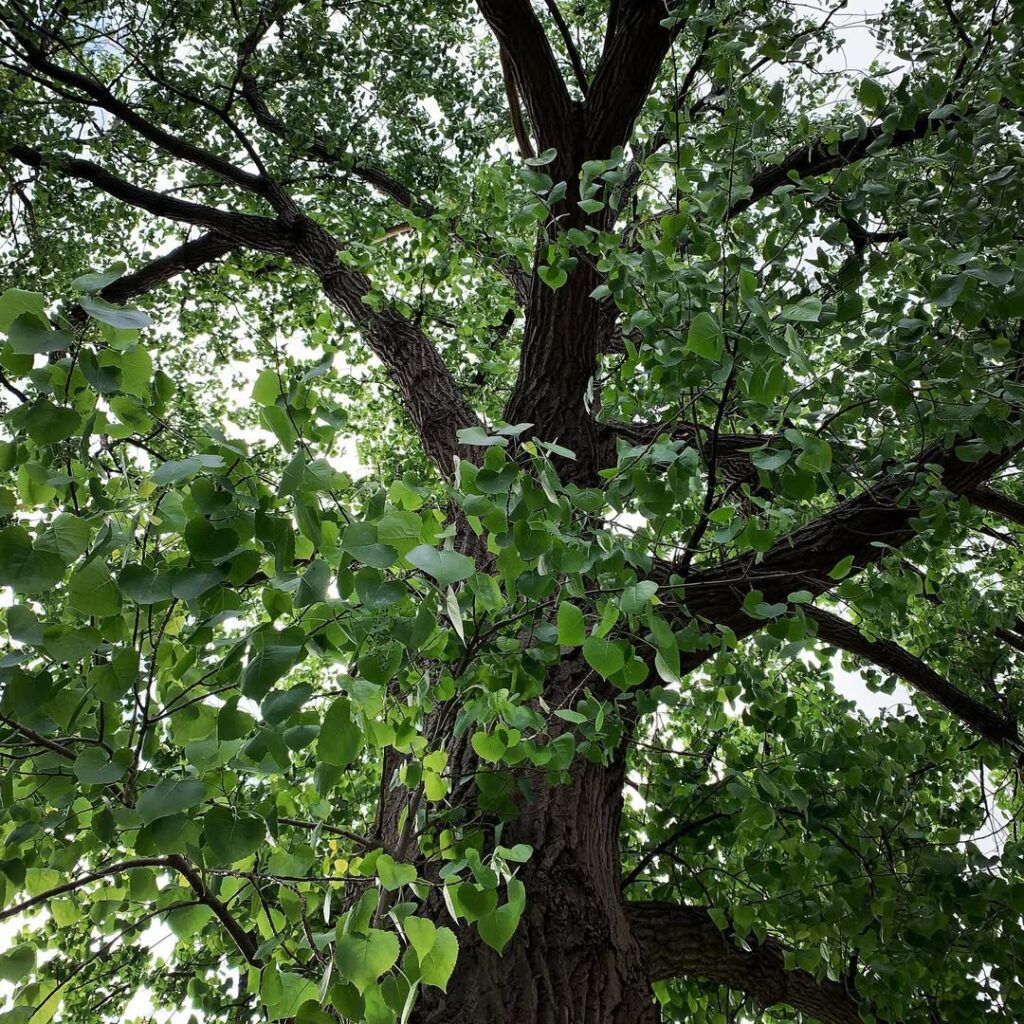
The Eastern Cottonwood stands as Nebraska’s official state tree, embodying the resilience needed to thrive in the Great Plains. This fast-growing native hardwood can reach impressive heights of 20-30 meters with distinctive triangular leaves that flutter in prairie winds due to their flattened petioles. Its silvery-white bark matures to dark gray with deep furrows, while cotton-like seeds disperse in early summer.
Renowned for exceptional drought resistance and fire-resistant bark, Eastern Cottonwood serves as a cornerstone species in Nebraska’s riparian ecosystems. Its rapid growth rate of up to 5 meters annually makes it invaluable for windbreaks and erosion control, though its massive mature size and tendency for branch drop require thoughtful placement in landscapes. The species provides critical wildlife habitat for numerous animals, including deer and rabbits that browse young trees, while beavers utilize saplings for food and dam construction.
- Hardiness: USDA zones 2-9, extremely cold tolerant and drought resistant
- Light: Full sun, requires at least 6 hours of direct sunlight daily
- Water: Moderate to high water needs, thrives with consistent moisture but drought tolerant once established
- Soil: Moist, well-drained fine sandy loams or silt loams; pH 6.0-8.0; poor performance on heavy clays or coarse sands
- Fertilizer: Low requirements, benefits from occasional organic matter; avoid high nitrogen which promotes weak growth
- Pest/Disease Resistance: Generally resistant but susceptible to leaf rust, cankers, and borers; good fire resistance
- Growth Rate: Very fast, 3-5 meters per year in ideal conditions, sustained 1.5 meter annual growth typical
American Elm

The American Elm is a fast-growing, long-lived native tree that exemplifies resilience in Nebraska’s challenging climate. With its distinctive vase-shaped crown and arching branches, this deciduous giant can reach 50-80 feet at maturity, providing exceptional shade and urban cooling benefits. Its rough-textured leaves turn golden-yellow in fall, while green wafer-like seedpods support local wildlife throughout the season.
Though historically devastated by Dutch elm disease, disease-resistant cultivars like ‘Princeton’ and ‘Valley Forge’ have restored this iconic species to Nebraska landscapes. The American Elm’s adaptability to various soil types, tolerance of urban pollution, and fire resistance make it an excellent choice for both street plantings and woodland restoration projects. Success in establishing these trees depends on careful consideration of adjacent infrastructure and monitoring of nearby structures for optimal growth.
- Hardiness: Thrives throughout Nebraska’s climate zones
- Light: Full sun to partial shade; adapts crown shape to light conditions
- Water: Moderate moisture requirements; tolerates various conditions if adequate water available
- Soil: Adaptable to various soil types; tolerates compacted and urban soils
- Fertilizer: Low maintenance; no specific fertilizer requirements noted
- Pest/Disease Resistance: Highly susceptible to Dutch elm disease; resistant to fire and deer damage
- Growth Rate: Fast-growing; reaches maturity in approximately 150 years
Bur Oak

The Bur Oak stands as Nebraska’s most common native oak and the “king” of Great Plains hardwoods. This resilient tree reaches 50-75 feet tall with an equally broad canopy, making it ideal for large landscapes and urban spaces. Known for its thick, corky bark and deeply lobed leaves, the Bur Oak demonstrates exceptional adaptability to harsh prairie conditions.
With a lifespan commonly exceeding 300 years, this slow to moderate-growing tree provides invaluable wildlife habitat through its large acorns and nesting sites. Its fire resistance, drought tolerance, and ability to thrive in compacted soils make it perfect for shelterbelts, parks, and restoration projects throughout Nebraska’s varied landscapes. The tree also shows remarkable tolerance to city smoke and air pollutants, making it an excellent choice for urban plantings.
- Hardiness: Extremely hardy, tolerates fire damage, drought, and harsh prairie conditions
- Light: Full sun to partial shade
- Water: Drought tolerant once established; prefers moist conditions but adapts to dry soils
- Soil: Tolerates wide range including compacted, sandy, high pH, and alkaline soils; thrives in rich, moist bottomlands
- Fertilizer: Not required; adapts to poor soils
- Pest/Disease Resistance: Less susceptible to oak wilt; generally free from serious insect problems
- Growth Rate: Slow to moderate; approximately 1 foot per year
Eastern Red Cedar

Eastern Red Cedar stands as Nebraska’s most resilient native conifer, thriving across the state’s diverse landscapes from the Niobrara River to eastern grasslands. This aromatic evergreen serves multiple ecological roles as a pioneer species, wildlife habitat provider, and soil stabilizer. While naturally reaching 25-35 feet in typical conditions, it can grow much larger in ideal environments.
Prized for its exceptional drought tolerance and adaptability, Eastern Red Cedar has become the backbone of Nebraska’s shelterbelt programs. Its deep root system and small leaf surface area allow it to withstand the state’s extreme weather conditions, making it invaluable for windbreaks and erosion control across prairie landscapes. The foliage displays distinctive russet coloration during winter months, adding seasonal interest to the landscape.
- Hardiness: Zones 3-9, extremely cold and heat tolerant
- Light: Full sun to partial shade
- Water: Drought tolerant once established, minimal irrigation needed
- Soil: Adapts to wide range of soil types, pH tolerant, well-draining preferred
- Fertilizer: Generally not required, thrives in poor soils
- Pest/Disease Resistance: Susceptible to Cercospora and Phomopsis blight, spider mites on young trees
- Growth Rate: Moderate to fast, establishes quickly
Green Ash
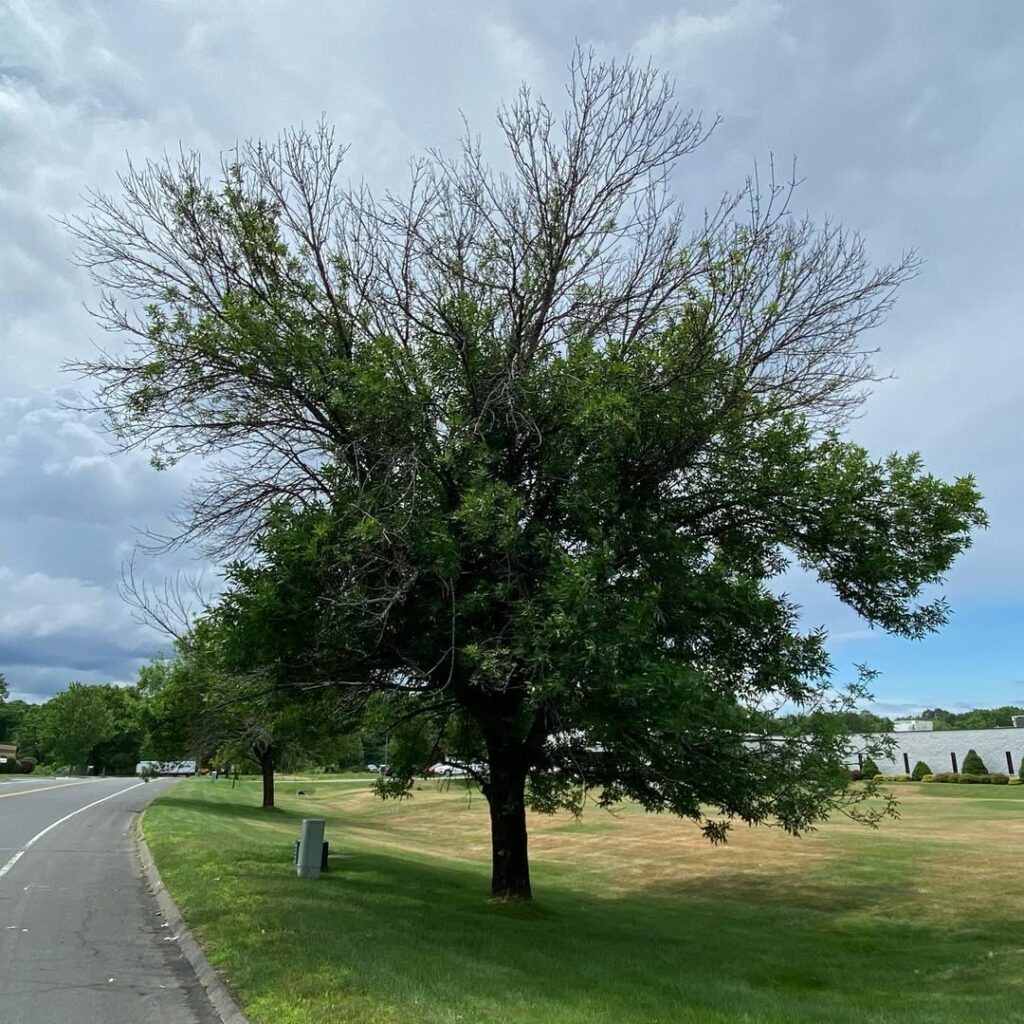
Green ash (Fraxinus pennsylvanica) stands as one of Nebraska’s most adaptable and valuable native trees. This hardy deciduous tree reaches 50-75 feet at maturity, developing from a pyramidal youth form to a broad, spreading crown. Its compound leaves display 5-9 yellow-green leaflets that provide excellent autumn color, while the distinctive bark changes from smooth gray to diamond-ridged patterns with age.
Thriving throughout Nebraska’s diverse landscapes, green ash dominates riparian zones and floodplains while adapting remarkably well to urban environments. Its exceptional tolerance for both flooding and drought conditions, combined with rapid establishment, made it a cornerstone species for Great Plains shelterbelts and urban forestry programs. Though emerald ash borer poses significant challenges, this native tree remains ecologically important for wildlife habitat and soil stabilization. Green ash also supports community health through its role in improving air quality and providing shade in urban settings.
- Hardiness: USDA zones 3-9, extremely cold tolerant
- Light: Full sun to partial shade
- Water: Moderate; drought tolerant once established, flood tolerant
- Soil: Adaptable to wide range of soil types, pH tolerant
- Fertilizer: Low requirements; benefits from occasional feeding in poor soils
- Pest/Disease Resistance: Susceptible to emerald ash borer; otherwise generally hardy
- Growth Rate: Fast-growing, quick establishment
Nebraska’s Best Native Shrubs
Nebraska’s native shrubs offer exceptional wildlife support while thriving in local conditions. These hardy plants provide drought tolerance, edible benefits, and adapt to various sun and soil requirements throughout the state. Native shrubs also contribute to erosion control with their established root systems that help stabilize soil naturally.
American Hazelnut
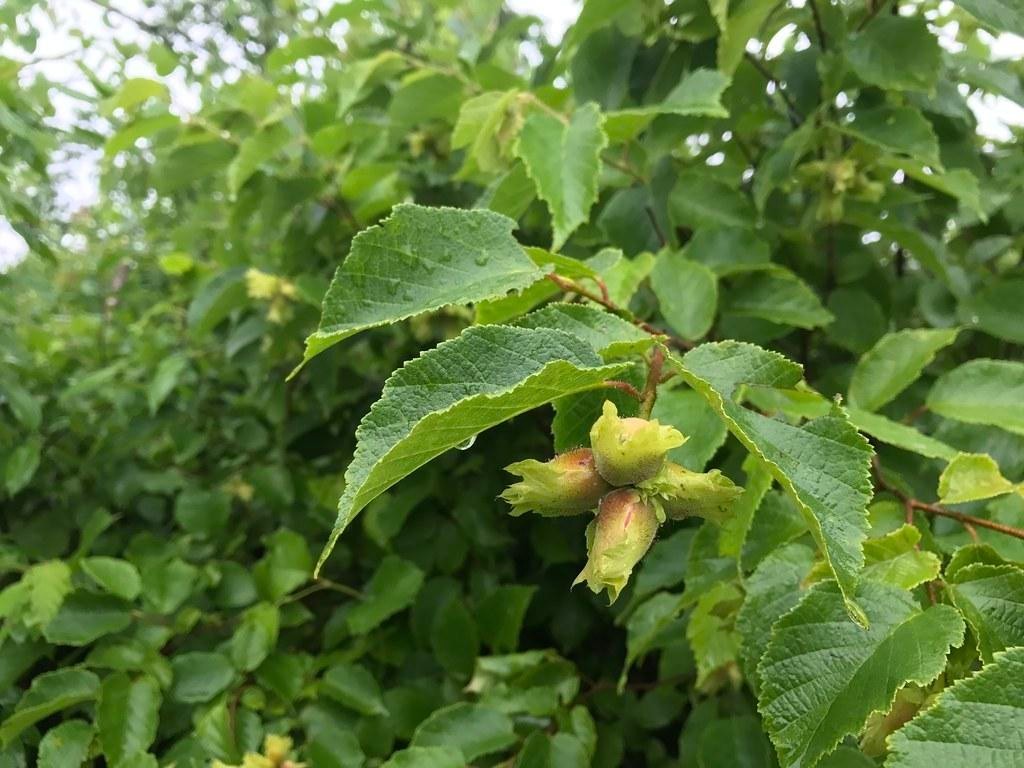
American Hazelnut stands out as one of Nebraska’s most valuable native shrubs, perfectly adapted to the state’s climate and soil conditions. This medium-sized shrub produces attractive yellowish-brown catkins in early spring and develops into dense, mound-shaped thickets that provide excellent wildlife habitat. The plant offers year-round interest with its dark green summer foliage, spectacular fall colors ranging from bright yellow to deep wine-red, and edible nuts that mature in autumn.
Beyond its ornamental value, American Hazelnut serves as an important food source for local wildlife, producing sweet nuts that attract birds like blue jays and woodpeckers. Its natural thicket-forming habit makes it ideal for naturalized areas, screening applications, and woodland gardens, while contributing greatly to Nebraska’s native ecosystem. The shrub typically reaches heights of 8 to 10 feet at maturity, making it perfect for medium-scale landscape applications.
- Hardiness: USDA zones 4-7, excellent for Nebraska’s climate
- Light: Full sun to partial shade (4-6 hours direct light daily)
- Water: Prefers moist conditions but tolerates occasional drought once established
- Soil: Thrives in moist, fertile loam; tolerates well-drained and alkaline soils
- Fertilizer: Minimal requirements as a native plant adapted to local soil conditions
- Pest/Disease Resistance: Excellent resistance as a hardy native species
- Growth Rate: Medium to fast-growing, begins nut production within 3-5 years
Elderberry
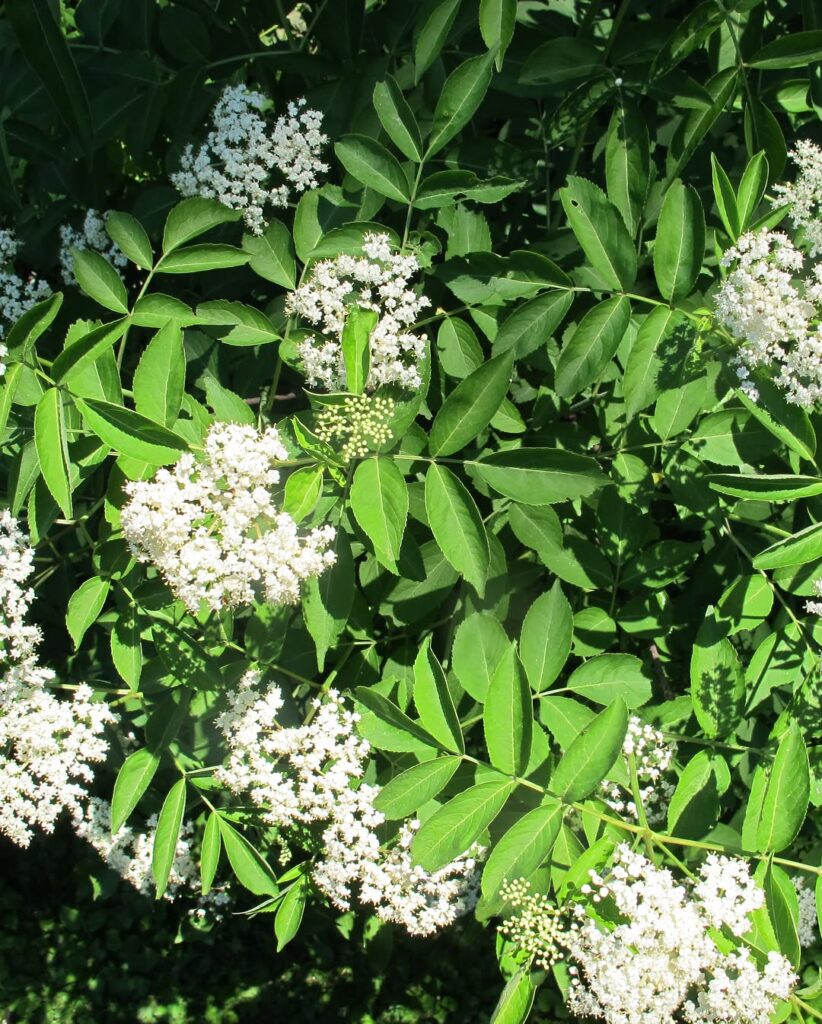
Elderberry is a fast-growing native deciduous shrub that reaches 5-12 feet tall with an arching, multi-stemmed habit. This versatile plant produces showy clusters of white flowers in late spring, followed by dark purple-black berries that provide essential food for wildlife. The compound leaves turn attractive colors in fall, adding seasonal interest to landscapes.
Beyond its ornamental value, elderberry serves as a wildlife magnet, attracting pollinators to its abundant blooms and providing nesting habitat through its dense branching structure. The cooked berries and edible flowers have traditional culinary and medicinal uses, making this shrub both functional and beautiful in naturalized plantings, hedgerows, and conservation areas. The berries are particularly valued for making jellies and syrups due to their rich flavor and natural pectin content.
- Hardiness: Zones 3-9, with some winter dieback in western Nebraska
- Light: Full sun to part shade
- Water: Medium to wet soils; tolerates moist streambanks to drier upland sites
- Soil: Prefers rich, moist, slightly acidic soils; pH 5.5-6.5; tolerates wide range
- Fertilizer: Low requirements in fertile soils
- Pest/Disease Resistance: Generally resistant with few major issues
- Growth Rate: Fast-growing with vigorous suckering habit
Serviceberry
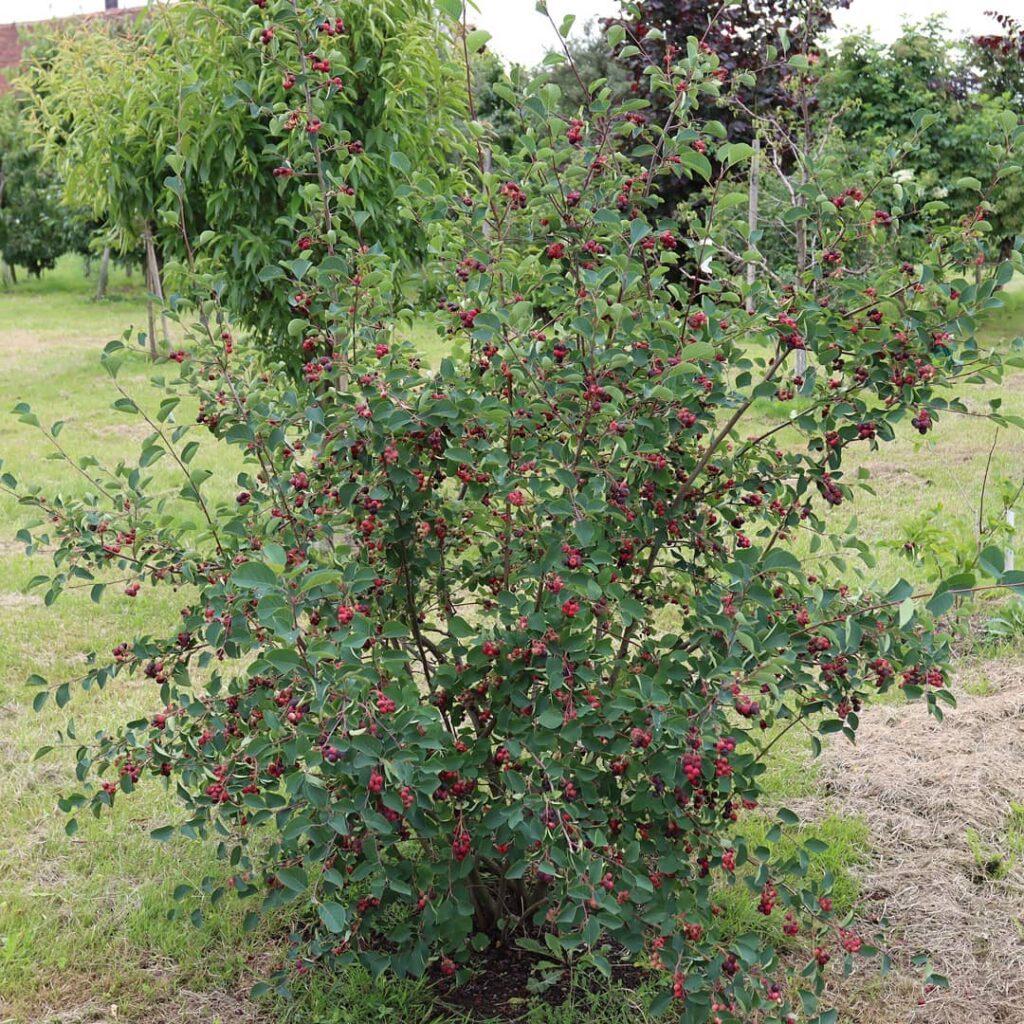
Serviceberry stands out as one of Nebraska’s premier native shrubs, earning recognition from the Nebraska Nursery & Landscape Association as a GreatPlants for Great Plains winner. This versatile medium-sized shrub thrives throughout the Midwest, forming attractive thickets 5-10 feet tall and wide that provide exceptional four-season interest.
The plant offers fragrant white spring flowers, edible summer berries resembling blueberries, and golden fall foliage. Its adaptability to various growing conditions, from full sun to partial shade and moist to dry soils, makes it ideal for naturalized plantings, woodland gardens, and shrub borders. Serviceberry serves as vital habitat for wildlife, supporting early pollinators with nectar-rich blooms and providing food for songbirds and game animals through its nutritious fruit.
At maturity, serviceberry reaches 15-20 feet in both height and spread when grown as a small tree. The berries are perfect for making jams, jellies, and pies, offering homeowners both ornamental beauty and culinary value.
- Hardiness: USDA zones 3-8, tolerates elevations up to 8,000 feet
- Light: Full sun to part shade, shade-tolerant
- Water: Moderate water needs, drought resistant once established
- Soil: Prefers moist, well-drained acidic soils but tolerates dry sites
- Fertilizer: Low maintenance, minimal fertilizer requirements
- Pest/Disease Resistance: Generally disease-resistant, occasional cosmetic damage from leaf spots, rust, and pear slugs
- Growth Rate: Moderate, spreads by rhizomes to form thickets
Sumac
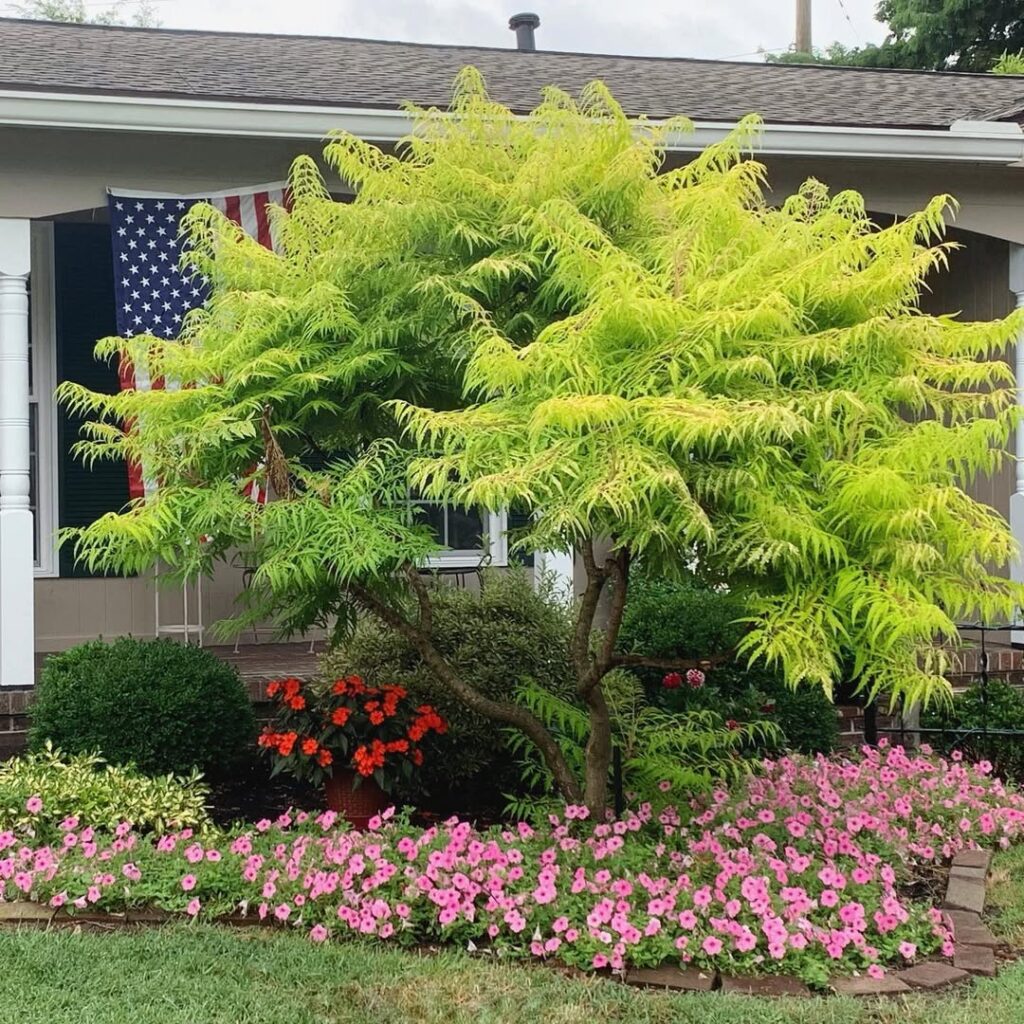
Staghorn Sumac is a versatile native shrub or small tree that reaches up to 40 feet tall and forms spreading thickets through rhizome growth. Distinguished by its large compound leaves with serrated leaflets and fuzzy red fruit clusters, this hardy plant provides excellent wildlife habitat and striking fall color. The velvety young stems and persistent winter fruit make it easily recognizable among Nebraska’s native vegetation.
This low-maintenance shrub excels in challenging conditions where other plants struggle, making it ideal for naturalized areas, windbreaks, and erosion control. Its aggressive spreading nature and deer resistance make it particularly valuable for large-scale habitat restoration and prairie restoration projects. As a Nebraska native species, staghorn sumac contributes significantly to local ecosystems and supports regional biodiversity efforts.
- Hardiness: USDA Zones 3a-8a
- Light: Full sun to partial shade; prefers open, sunny locations
- Water: High drought tolerance once established; minimal irrigation needed
- Soil: Adaptable to dry, rocky, disturbed soils; pH 6.0-7.5; excellent drainage preferred
- Fertilizer: None required; thrives in poor soils
- Pest/Disease Resistance: Excellent; not typically browsed by deer
- Growth Rate: Fast; spreads aggressively via rhizomes to form colonies
Dogwood

Nebraska’s native dogwoods are exceptional shrubs that combine ornamental appeal with ecological value. The three primary species—roughleaf dogwood (Cornus drummondii), gray dogwood (Cornus racemosa), and alternate-leaf dogwood (Cornus alternifolia)—offer multi-stemmed growth reaching 15-25 feet with showy white spring flowers and colorful fall foliage.
These deciduous shrubs excel in wildlife habitat creation, providing dense shelter for nesting birds while their white fruit clusters feed wildlife through summer and fall. Their flowers attract pollinators, and several species serve as larval hosts for native butterflies and moths. The dense growth habit makes them ideal for windbreaks, natural screens, and erosion control on stream banks and hillsides. As Nebraska natives, these dogwood species are exceptionally well-adapted to local growing conditions and support regional ecosystem health.
- Hardiness: USDA zones 2-8, with excellent cold tolerance across Nebraska’s climate range
- Light: Full sun to partial shade; alternate-leaf dogwood prefers partial to full shade
- Water: Moderate to high moisture preference; roughleaf dogwood tolerates drought better than other species
- Soil: Adaptable to sandy, loam, or clay soils; pH range 4.8-7.4; roughleaf dogwood handles alkaline conditions well
- Fertilizer: Low maintenance; no supplemental fertilization typically needed in native settings
- Pest/Disease Resistance: Generally pest-free with good disease resistance when planted in appropriate conditions
- Growth Rate: Moderate to fast growth rate; spreads by root suckers to form colonies
Selecting the Right Native Plants for Your Garden
How do you choose the perfect native plants that’ll actually thrive in your specific Nebraska garden? Start with thorough site assessment. Research your local ecosystem type—prairie, woodland, or wetland—then evaluate sunlight conditions throughout the day. Check soil structure, moisture levels across seasons, and wind exposure factors.
Smart native plant selection means matching species to conditions. Purple Coneflower and Black-Eyed Susan excel in sunny spots, while Bur Oak provides excellent shade. Consider your garden ecosystem’s needs: Butterfly Weed supports pollinators, Eastern Red Cedar offers windbreak protection. Choose diverse species for year-round interest and wildlife habitat. The Flora of Nebraska manual provides confirmed field collections for nearly all documented species in the state.
Frequently Asked Questions
When Is the Best Time to Plant Native Prairie Plants in Nebraska?
You’ll find fall dormant seeding works best for planting native prairie plants, though spring’s effective too. Consider seasonal considerations like bloom times and use proper planting techniques – fall perennials need spring installation, spring bloomers require fall planting.
How Much Do Native Prairie Plants Typically Cost Compared to Non-Natives?
You’ll find native plant pricing initially comparable or slightly higher per plant, but you’ll save considerably long-term. Cost comparison shows natives reduce maintenance expenses by $3,950-$4,683 annually per acre versus non-natives.
Where Can I Purchase Native Prairie Seeds and Plants in Nebraska?
You can purchase native prairie seeds from specialized seed suppliers like Prairie Legacy Inc. and Prairie Plains Resource Institute. Online nurseries such as Bare Bones Nursery and local options like Great Plains Nursery offer excellent selections.
Do Native Prairie Plants Attract Deer or Other Wildlife to My Property?
Yes, native prairie plants offer significant wildlife benefits by attracting deer, birds, and pollinators to your property. Deer preferences include sumac and bur oak for browse, while diverse plantings create nesting habitat for various species.
How Long Does It Take for Native Prairie Plants to Become Established?
Like watching paint dry, prairie establishment requires patience. Your establishment timeline spans 3-5 years for maturity, though you’ll see growth in year two. Proper growth conditions and moisture accelerate this natural process greatly.
